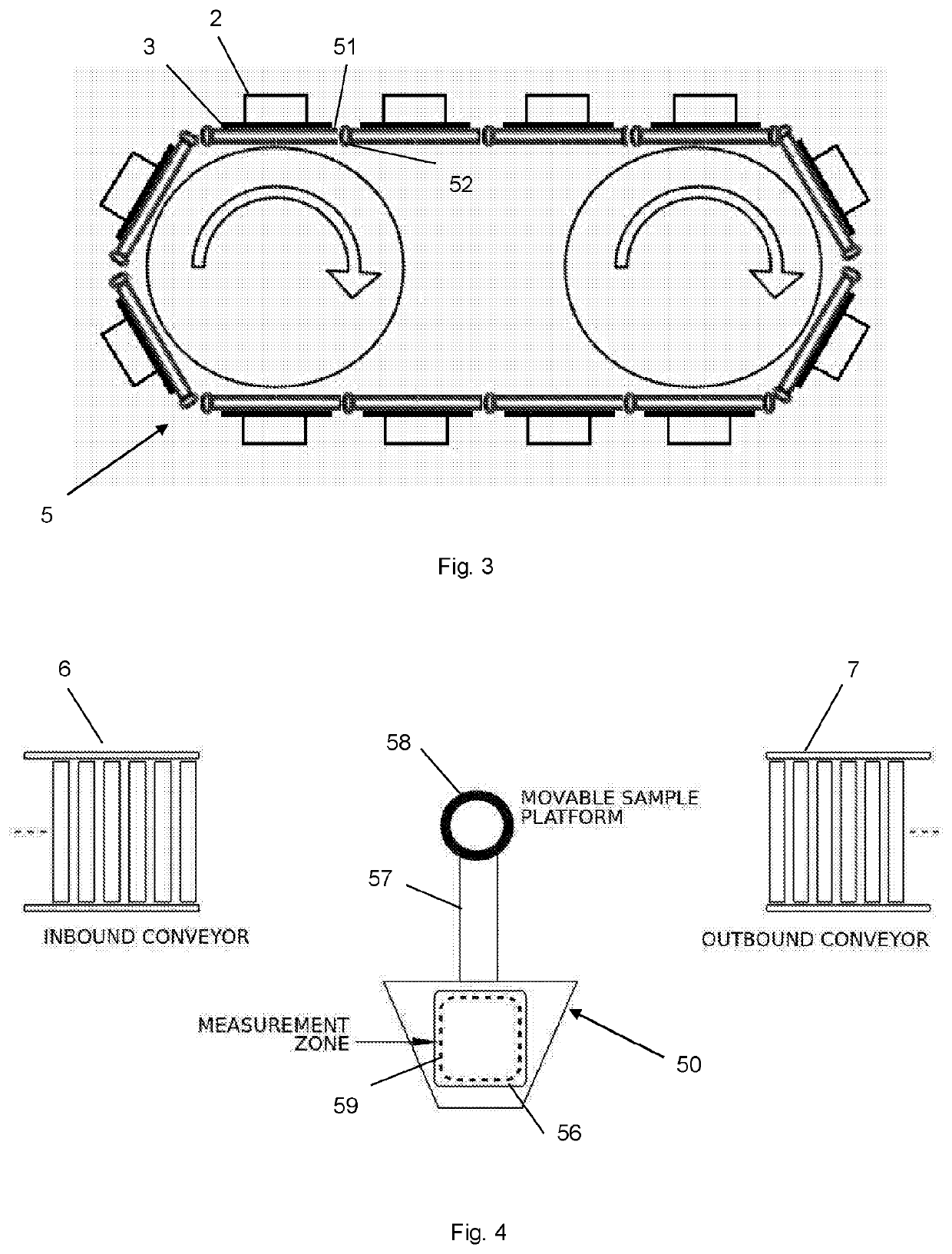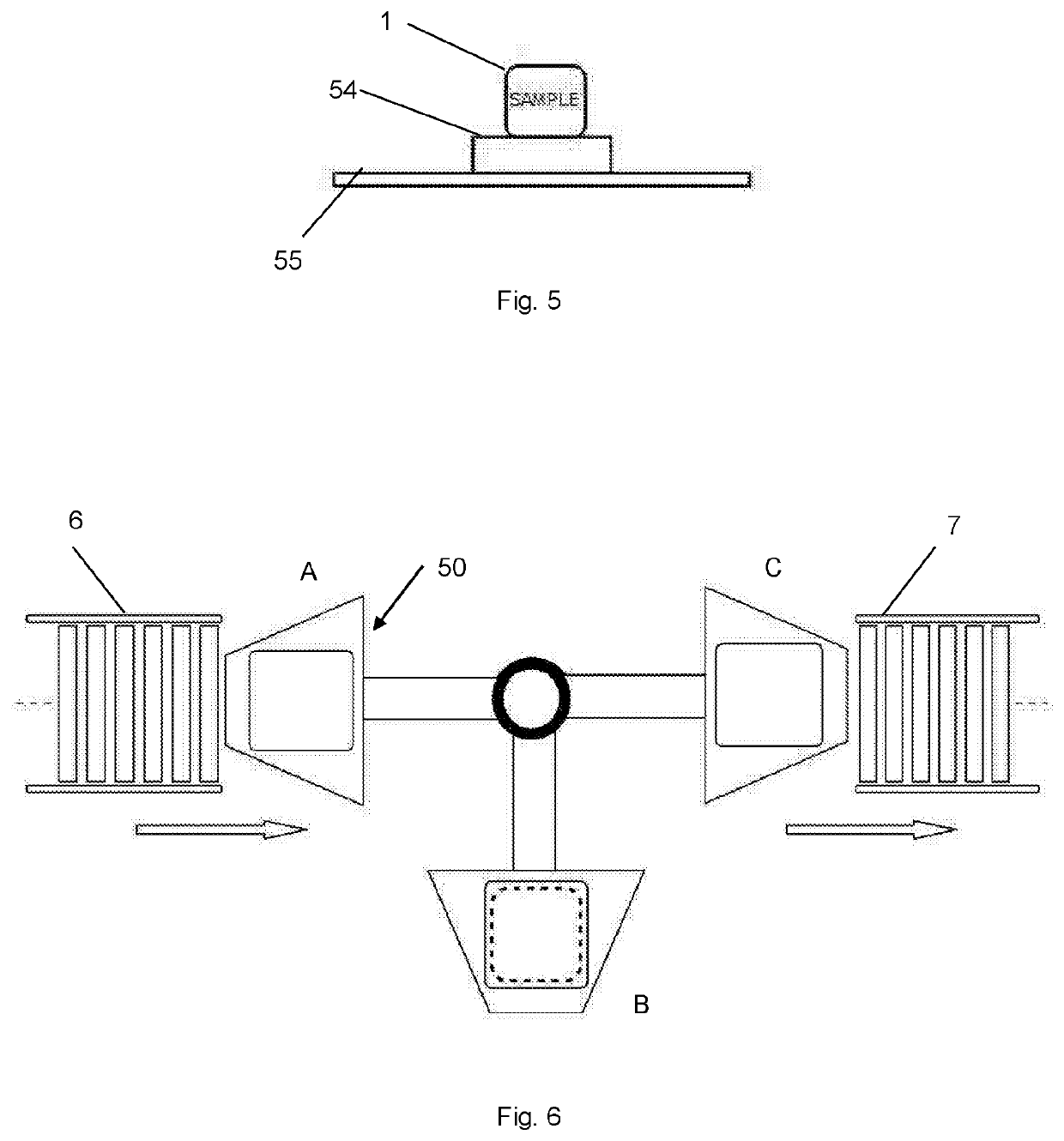Methods and apparatuses for temperature measurement
a technology of temperature measurement and apparatus, applied in the field of methods and apparatuses for temperature measurement, can solve the problems of inability to safely and accurately penetrate and measure the product, inability to reliably detect the temperature of the product, and inability to accurately measure the product, so as to avoid spikes or spurious readings, accurate and repeatable temperature profiles
- Summary
- Abstract
- Description
- Claims
- Application Information
AI Technical Summary
Benefits of technology
Problems solved by technology
Method used
Image
Examples
first embodiment
[0152]FIG. 2 shows the present invention in which a plurality of separate base plates 3 are mounted as part of a conveyor mechanism 5. Each base plate 3 has a separator 2 mounted on it in a substantially central position. Samples 1 can be placed onto or guided to sit on each separator as part of a larger industrial process.
[0153]The conveyor mechanism includes a plurality of rigid plate elements 51, each of which has a base plate 3 and separator 2. Each plate element 51 is connected to the adjacent plate element by a hinged connector 52. The connectors 52 can allow the conveyor mechanism as a whole to form a closed loop, for example as shown conceptually in FIG. 3. In alternative arrangements, the plate elements 51 may be connected so as to allow connection in a closed loop in the plane of the plate elements (i.e. permitting rotation of the plate elements relative to the adjacent plate elements about an axis perpendicular to the plane of the plate elements).
second embodiment
[0154]FIG. 4 shows, conceptually, the present invention in which a movable sample platform 50, which has an arm 57 connected to a paddle 56 and is rotatable about a substantially vertical axis (perpendicular to the plane of the figure) passing through a hub 58. The paddle 56 has a measurement zone 59 located on it. The sample platform 50 moves around the hub 58 so as to move samples between an inbound conveyor 6 and an outbound conveyor 7 via a measurement point at which the sample can be measured.
[0155]FIG. 5 shows a side view of the sample platform 60, which has a base plate 55 which is conductive / radiofrequency-reflective and a separator 54 which is transparent or substantially transparent to radiofrequency radiation and on which the sample 1 is placed in a similar configuration to the base plates 3 and separators 2 described in relation to the first embodiment above. In an alternative configuration, only the measurement zone 59 need be conductive and the surrounding parts of the...
PUM
| Property | Measurement | Unit |
|---|---|---|
| temperatures | aaaaa | aaaaa |
| temperature | aaaaa | aaaaa |
| depth | aaaaa | aaaaa |
Abstract
Description
Claims
Application Information
 Login to View More
Login to View More - R&D
- Intellectual Property
- Life Sciences
- Materials
- Tech Scout
- Unparalleled Data Quality
- Higher Quality Content
- 60% Fewer Hallucinations
Browse by: Latest US Patents, China's latest patents, Technical Efficacy Thesaurus, Application Domain, Technology Topic, Popular Technical Reports.
© 2025 PatSnap. All rights reserved.Legal|Privacy policy|Modern Slavery Act Transparency Statement|Sitemap|About US| Contact US: help@patsnap.com



